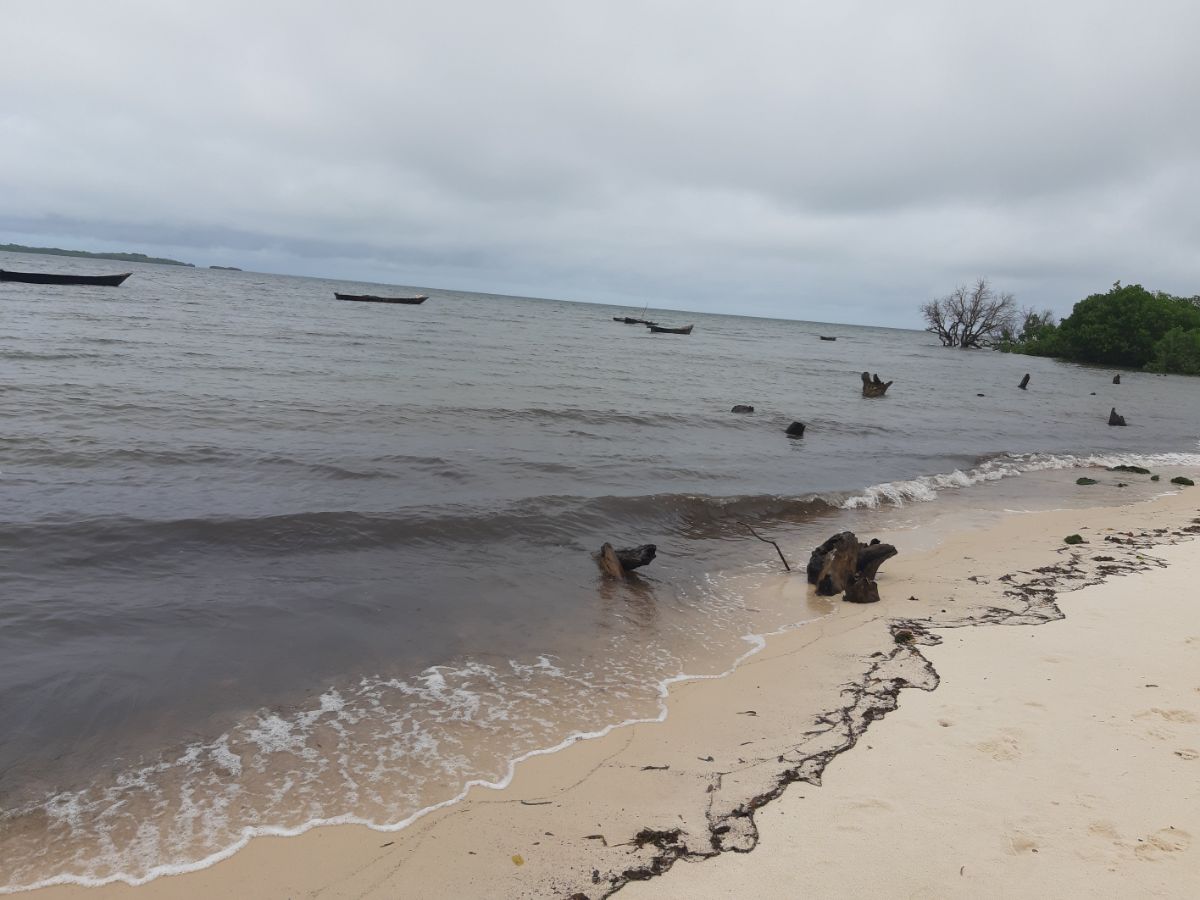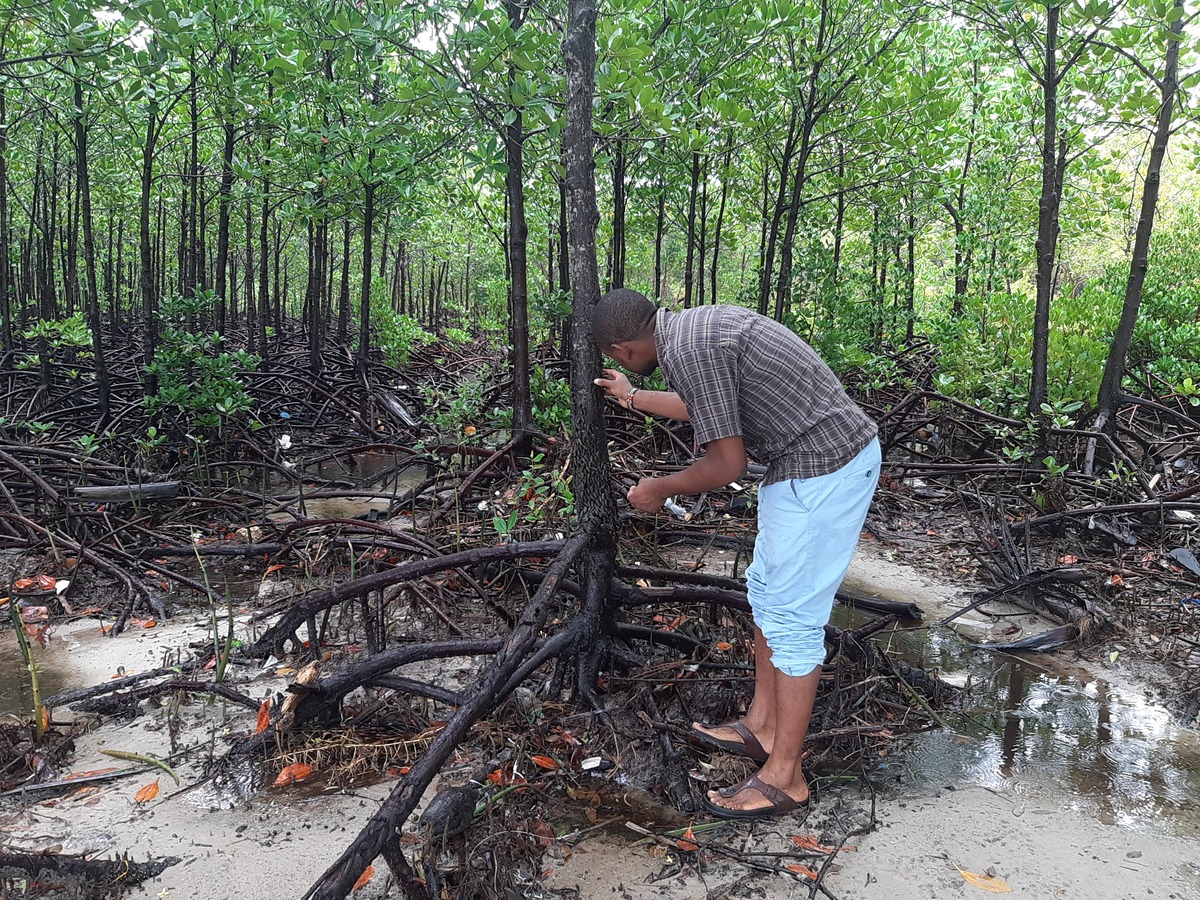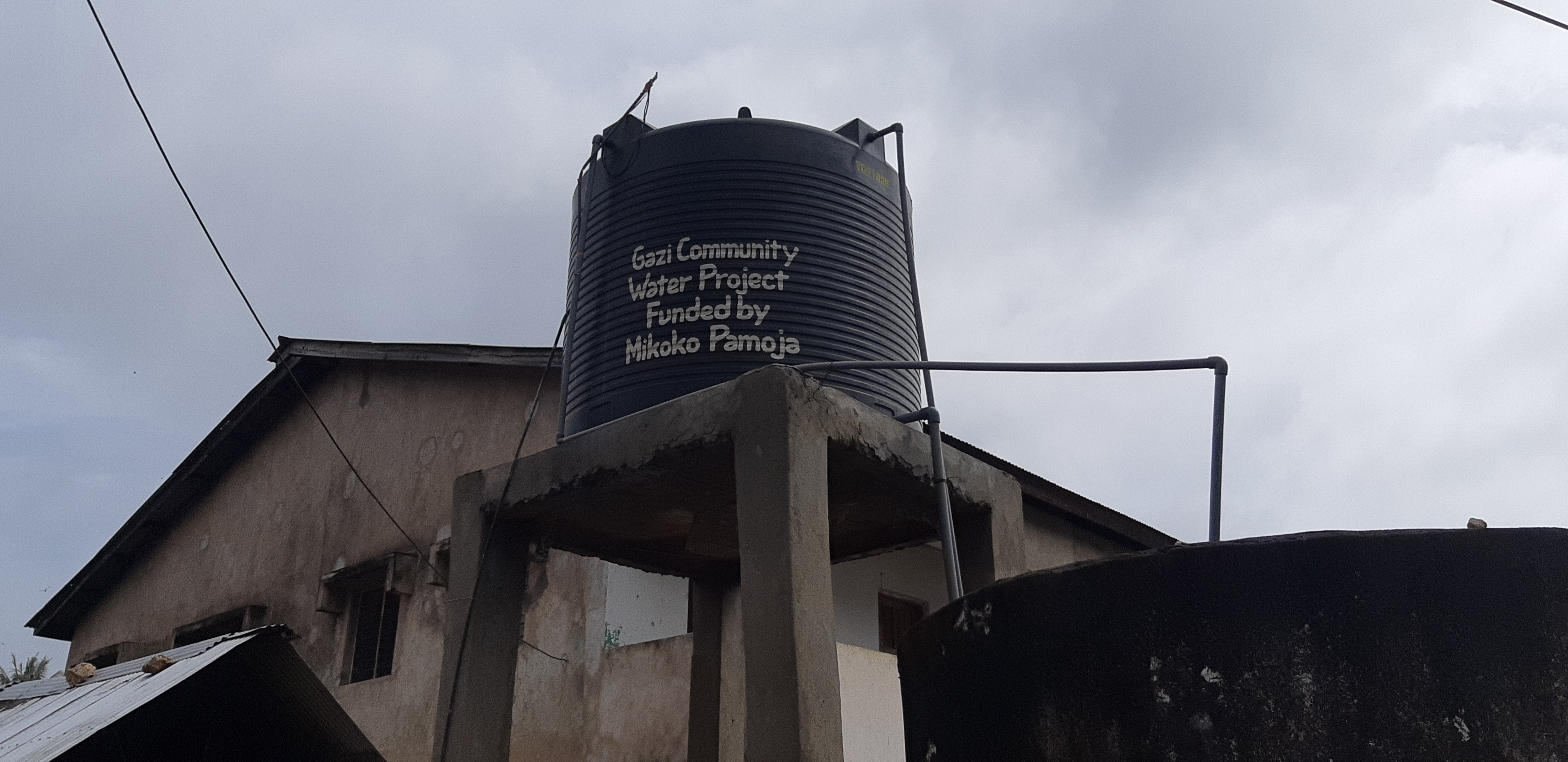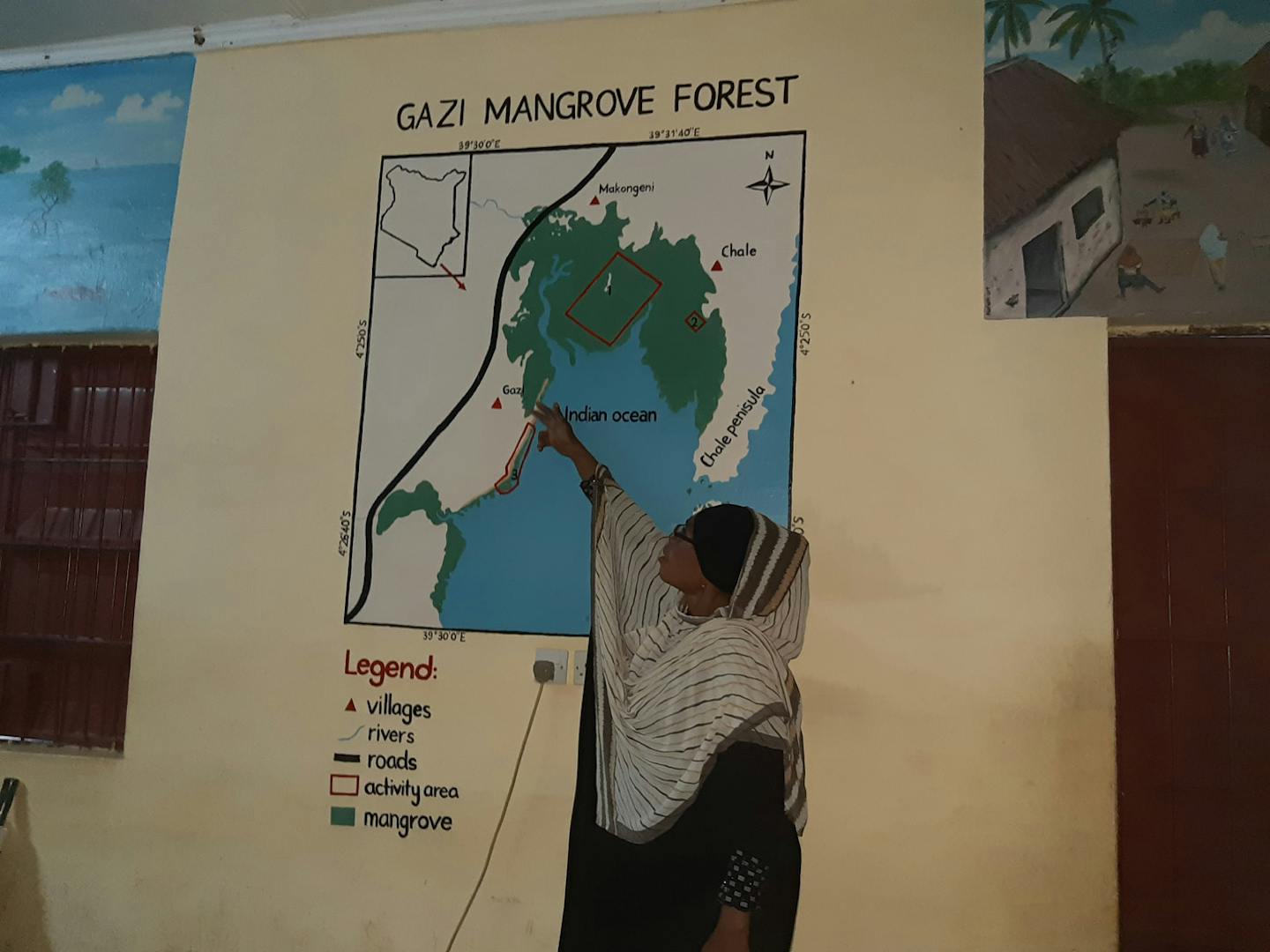One woman’s quest to restore the mangrove forests in Kenya
When decade-old palm trees started falling off 54-year-old Hafsa Mohamed’s farm in Gazi village, Southern Kenya years ago, she did not think that some of the activities her community members had been undertaking were to blame. Hafsa said,
For many years, villagers in Gazi cut down mangrove trees to make support poles for their houses and for firewood. Little did they know that their actions would render the entire village vulnerable to the increasing dangers of climate change in years to come.

Stumps showing some of the mangroves that were cut down in Gazi beach.
Mangrove forests absorb three to four times more carbon as compared to tropical forests, making them an essential player in the fight against climate change. Mangrove cover also protect against climate-related weather events such as stronger typhoons and rising sea level.
Having learned this, Hafsa enlisted herself as one of the community volunteers for Mikoko Pamoja, a community-initiated project that aims to sell carbon credits from an ocean ecosystem. Loosely translated as ‘Mangroves together’ in Swahili, Mikoko Pamoja operates in Gazi and Makongeni villages which both border the Indian Ocean.
Today, Kaa hewa (Carbon credit), a term that was unheard of in the two villages about a decade ago, is a common term to both the old and the young.
Josephat Mwamba, Mikoko Pamoja’s community coordinator, said their activities involve replanting degraded mangrove trees and conserving the already existing mangrove trees.

Josephat Mwamba, Mikoko Pamoja's coordinator inspecting a mangrove tree in some of the areas they protect.
“When the project was started back in 2010, more than 20% of the mangroves had been degraded through human activity,” Mwamba said.
To date, the community has replanted more than 10,000 mangrove trees and helped protect the 117 hectares of mangrove trees in both Gazi and Makongeni villages.
This in turn helps absorb 3000 tonnes of carbon which, according to Mwamba, has helped the group earn approximately $10,000 in carbon credits sale every year since 2013.
“50% of the biomass of a mangrove tree is the amount of carbon the tree has absorbed,” Mwamba says.
Unlike other community conservation projects in Kenya where monetary benefits are trickled down to the participants, Mikoko Pamoja’s benefits from the sale of carbon credits have been dedicated to community development projects in both villages.
One of the projects is a water sanitation facility that has provided piped water to every household, benefiting more than 3500 people.
The villages also managed to purchase school books and furniture for the local dispensary, and supported a local football team with funding through the sale.
In 2017, the project won the United Nations Development Program (UNDP) Equator Prize, which recognizes a community’s nature-based actions to advance the 17 Sustainable Development Goals (SDGs).

The water tank near the borehole that supplies water to Gazi village .The project was financed by proceeds from the sale of carbon credits by Mikoko Pamoja.
Mikoko Pamoja was cited for its role in reducing poverty through sustainable use of biodiversity.
“Using the money we got from the Equator Prize, we were able to employ forest scouts to protect the mangroves and build a watch tower,” he said.
On average, Kenya produces 73 metric tonnes of carbon dioxide which is approximately 0.1% of the global greenhouse gas emissions with agriculture being the largest contributor due to unsustainable land use.
In line with the 2015 Paris Agreement, Kenya hopes to reduce its greenhouse gas emissions by 30% by 2030.
The country’s National Climate Action Plan adopted in 2013 which aims to increase the Kenyan forest cover to 10% from the current 6%, but it leaves out any specific plan on mangrove conservation.
Elias Kimaru, Project Manager, World Wide Fund for Nature Kenya, said that talks are ongoing to include mangroves protection in the national climate change strategy.



